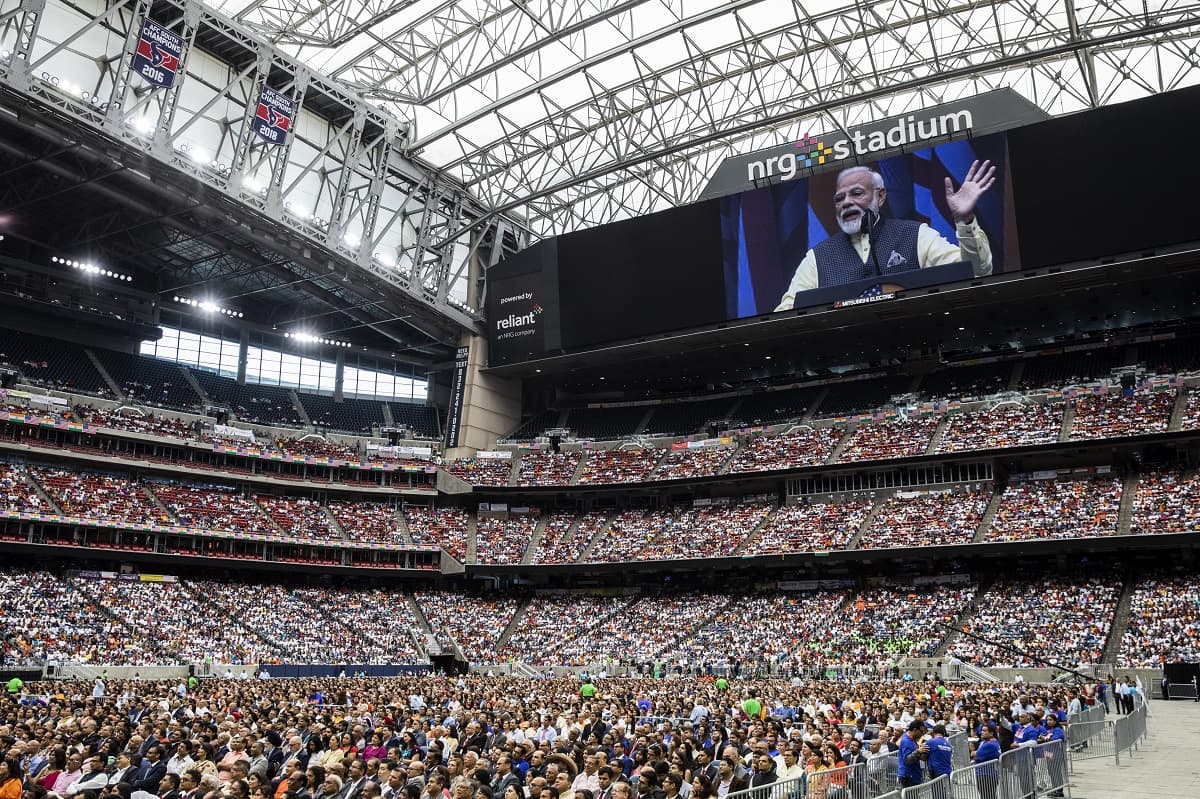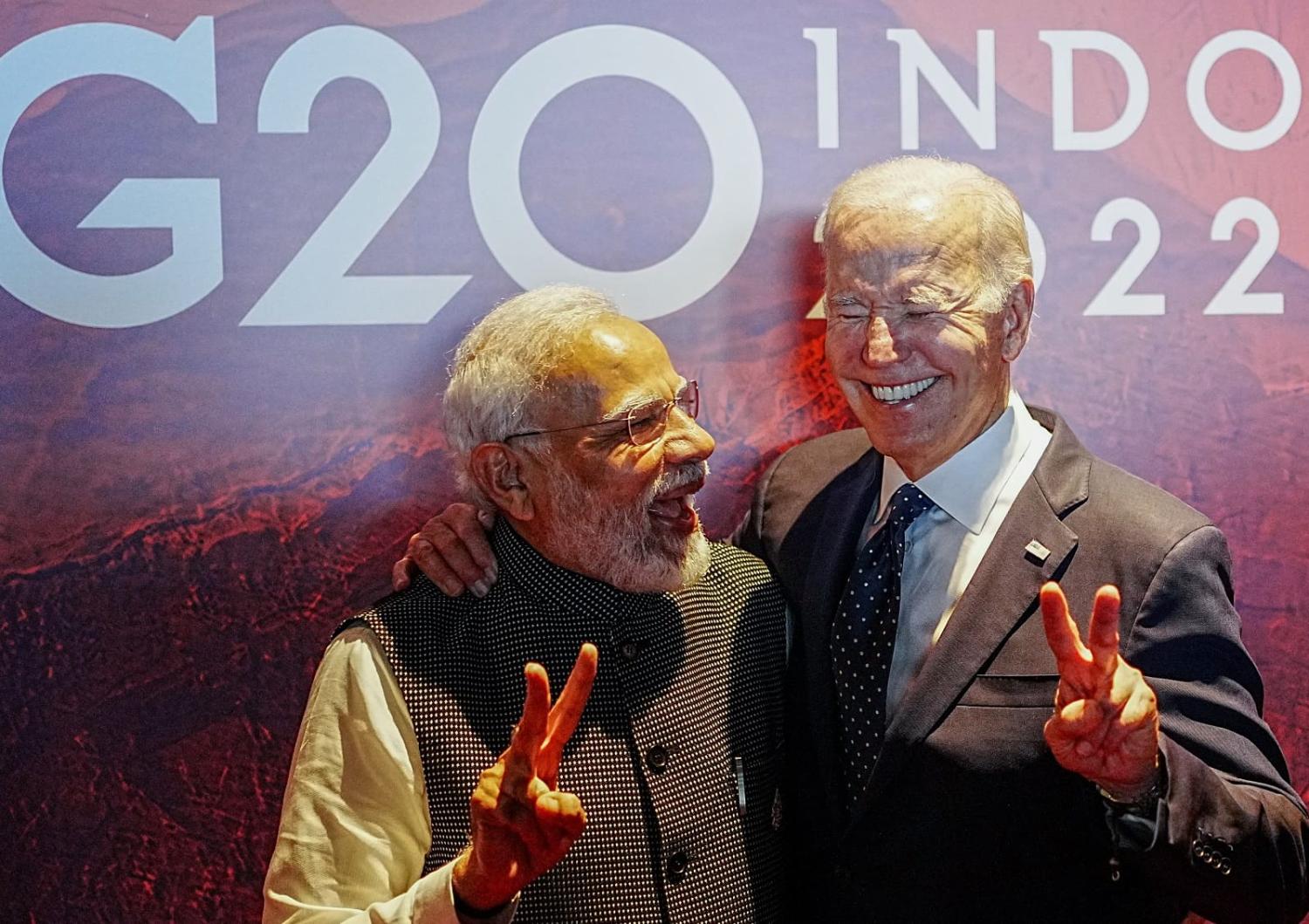It seems like just a minute ago that Indian Prime Minister Narendra Modi was in Australia, hugging his counterpart Anthony Albanese in front of a crowd of 20,000 ecstatic followers. Now he’s about to jet off to the United States to do it all again. Modi’s last public visit to the United States in 2019 is best remembered for the Texas diaspora event “Howdy Modi”, which lives on in the imaginations of all Indians thanks to its unforgettable name.
This time though, the ante is upped: it is an official state visit, and Modi will be honoured with a state dinner on 22 June, after addressing a joint session of Congress and Indian–American diaspora leaders. It won’t be another Howdy Modi event, much to the dismay of news media everywhere, but instead will be a much smaller gathering held at the Ronald Reagan Building and International Trade Centre, which has a capacity of less than 1000.
With Modi’s one-time visa ban to the United States now ancient history, US President Joe Biden has several reasons to welcome Modi with open arms. One is geopolitical: it will come as no surprise that India is, to the United States, a potential bulwark against China. The White House has hailed the relationship between the two countries as “the warm bonds of family and friendship that link Americans and Indians together”. India and the United States share many interests, from technology to counter-terrorism, outer space to clean energy, however do not have a formal alliance. The United States is India’s largest trading partner, with overall bilateral trade reaching US$157 billion in 2021, according to the State Department. They are also brought together in various multilaterals, such as the Quad, the ASEAN Regional Forum, the G-20 and more.
Second, there is also the strength and might of the Indian–American diaspora. Numbering around 4.9 million, it is a group that is wealthy, aspirational, politically energised – and one that votes in increasing numbers. It also counts among its numbers the current Vice President in the biracial Kamala Harris, and two contenders in the Republican Party presidential primaries, Nikki Haley and entrepreneur Vivek Ramaswamy.

With a lot at play, how will this week’s visit pan out?
One thing is certain: Biden will, without doubt, lean into the trademark Modi bearhug. Biden has all the trademarks of a hugger.
What is less certain is just how he will parse his message so it doesn’t alienate Modi and India – a partnership that is important to Washington – but also doesn’t alienate liberal elites, those who foreground human rights, civil liberties, the separation of powers, and in particular democracy, which is one of Biden’s core projects. This visit comes just months after Biden hosted his second Summit for Democracy, and he has often spoken of the need to bolster democracy as the best way to realise lasting peace, prosperity and human dignity.
India is now regularly described as an illiberal democracy. For Biden, embracing the Indian leader under whose rule the democratic backsliding has occurred, is a choice. The visit comes a week after Twitter founder Jack Dorsey accused New Delhi of seeking to censor content on the platform, causing rancour in India. With technology a key area of cooperation, it might be a topic hard to avoid.
Biden is, of course, in an unenviably tight spot. What he does is one thing, but the words he uses will be extremely cautious – and significant. Will he address rising autocratisation? And how?
There are clues in the words of Secretary of State Antony Blinken, who spoke at an event hosted by the US–India Business Council in Washington, DC last week.
“We know that India and the United States are big, complicated countries,” he said. “We certainly have work to do to advance transparency, to promote market access, to strengthen our democracies, to unleash the full potential of our people. But the trajectory of this partnership is unmistakable and it is filled with promise.”
Slick and on message, Blinken’s words addressed the complexities but slid over them towards a bright shared future.
This is an evolution for the administration: in April, US Commerce Secretary Gina Raimondo spoke after a trip to India, in comments that were gushing and confusing at the same time. Wearing what looked like an approximation of a sari, Raimondo spoke convincingly about Modi and the partnership. “He is unbelievable, [a] visionary, and his level of commitment to the people of India is just indescribable, and deep and passionate and real and authentic.” She goes on to tell an anecdote about broaching the issue of online disinformation with him. It’s confusing; I still can’t grasp the final message.
And this is the crux of why investing in political communication matters so much. A coherent and consistent message is key. There’s a difficult balancing act here between currying favour with a somewhat unsavoury leader and the need to keep your political base onside by not getting too close. This is particularly pertinent given that there are a number of protests planned for Modi’s US visit, and that anti-Modi groups and communities in the United States are mobilising swiftly. For all the talk of tech cooperation and AI (artificial intelligence that is, not American and Indian tech cooperation, as per the Raimondo comments), this is where investing properly in skilled human communicators is vital. Now is not the time to ask ChatGPT to write a speech. Getting a clear message across is a tough tightrope to walk; whether Biden manages not to fall off remains to be seen.

